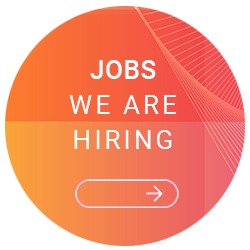Last Updated on 7. October 2025
AI is changing how companies operate, make decisions and grow – but its successful implementation is not a foregone conclusion. This is demonstrated by studies and confirmed in our discussions on the use of AI in companies: the majority of AI prototypes do not make it into widespread implementation. The reasons for the lack of scaling are rarely due to the technology itself. In most cases, it fails due to other factors: a lack of strategic orchestration of AI initiatives, unclear criteria for benefits – and, last but not least, a lack of culture and empowerment within the company.
Sustainable benefits only arise when strategy, organisation and culture work together. Without this framework, AI projects remain piecemeal, even if the technical basis is right. This is precisely where it is decided whether companies can make the leap from individual pilots to scalable, effective implementation. Our project experience has revealed recurring patterns, which we have summarised in a practical and implementable way. They illustrate what companies need to do now to use AI with sustainable success – and why working with experienced partners is often the shortest route to achieving this.
The question is not so much whether AI can be integrated technologically, but rather: How can companies create the organisational and cultural conditions necessary to turn individual prototypes into real value drivers?
This is precisely the point at which it is decided whether individual projects will have a lasting impact or whether good approaches will remain stuck in the pilot stage.
Strategy, organisation and culture – the keys to success
Clear direction and focus on benefits
It takes more than just a clear vision from a few decision-makers; it requires a shared vision among the entire management team of what AI should contribute to the company. ‘Outcome-first’ means consistently prioritising use cases according to their business benefits. This creates the necessary clarity for resource allocation and acceptance and prevents friction over priorities.
Anchoring responsibility and collaboration
Equally crucial is a governance structure that goes beyond IT. AI initiatives only take effect when specialist departments, IT, compliance and HR work together to fulfil their responsibilities. Clear orchestration by interdisciplinary committees, guidelines on data protection and ethical issues, and binding decision-making processes prevent projects from stalling – and ensure that results are quickly and effectively transferred into everyday work.
Culture and empowerment – building trust, developing skills
Studies and our experience in projects show that initially, most of the effort goes into algorithms, data and technology. However, as AI becomes more widespread in the company, the focus shifts significantly towards empowering employees, redesigning workflows and promoting cultural and organisational transformation. This is precisely where it is decided whether AI will have an impact in practice.
How to successfully implement AI
Our experience shows that these points are crucial levers for the widespread application of AI tools and technologies in companies. They only unfold their value when people understand them, trust them and then integrate them into their work.
Anyone who wants to transfer prototypes into broad AI use must ensure two things: Leadership, learning culture and empowerment should be considered together, and an early decision should be made to set up AI platforms and technologies.
Leadership and common alignment – supported by a learning culture
When managers set clear goals and free up resources, implementation gains momentum. Projects in which IT and specialist departments share responsibility and compliance is integrated from the outset are particularly successful. Not only do they have a faster impact on everyday work, but they also build trust in the results. By starting early and proceeding in rapid learning cycles, AI initiatives (such as in AI labs) benefit particularly: teams gain valuable experience, test hypotheses and continuously develop projects. In this way, strategic clarity of objectives (‘outcome-first’) and shared learning are closely linked, and the assumption of responsibility is encouraged.
Broad empowerment as a driver for effective AI implementation
It is not enough to empower only specialists in IT or data science within the context of prototypes. The real success factor is building competence across the board: if only a few people have a deep understanding of AI, a noticeable gap emerges between the ‘knowers’ and the ‘non-knowers’. New tools seem like foreign objects, acceptance of further solutions fails to materialise, and AI applications that have already been rolled out do not reach their full potential.
Practical learning opportunities, micro-learning formats and internal ambassadors, on the other hand, create trust and transparency. AI is seen less as a threat to one’s own job and more as a support for daily work. In the long term, broadly anchored AI competence not only ensures the acceptance of new AI solutions, but also increases the company’s innovative capacity. Broad empowerment also improves the quality of the use cases themselves. Employees in the specialist departments can identify opportunities more clearly, formulate requirements more clearly and thus build the necessary bridge between the possibilities of AI technology and specialist logic. This results in more effective solutions that are closer to the processes. AI thus transforms from an abstract tool into a concrete value driver, and the culture can contribute to sustainable implementation.
Clarify the technology path early on – why it is crucial
Many companies have relied on in-house development for too long, thereby overloading projects – others, on the other hand, have created dependencies on external providers, which made subsequent scaling difficult. Those who were successful were the ones who established a clear decision-making framework for their technology strategy early on and consciously balanced in-house performance with partner support (weighing up ‘make’ and ‘buy’).
The question of whether AI platforms should be built internally, developed jointly with partners or implemented entirely externally is not a technical detail, but a strategic decision. It determines speed, resource utilisation and risk profile – and defines the extent to which the company itself builds up expertise. Early clarity avoids misinvestments, costly lock-ins and internal developments that come to nothing.
Important criteria for the decision are: strategic relevance of the use case, data protection and compliance requirements, existing technology stack, cloud and platform infrastructure or capacities, desired time-to-market and the internal maturity level of AI technology expertise.
Quick check: Are you ready for the sustainable use of AI?
No matter where you stand – whether you are just starting out or have already implemented your first AI projects – the following questions will give you some initial guidance:
- Strategic anchoring: Is there a common understanding of how AI should support your business goals? Are you already working with a realistic roadmap that integrates the technology path and organisational steps – i.e., one that not only lists use cases but also identifies clear priorities and dependencies?
- Data and technology base: Are the relevant data sources identified, accessible and of sufficient quality? Do you have a defined technology path that describes how pilot solutions will be transferred to a scalable and secure operating environment?
- Organisation & culture: How are your structures and employees set up for AI implementations and new ways of working? How systematically do you develop internal expertise: Are there programmes that not only empower employees to use AI, but also strengthen their understanding of the opportunities, limitations and responsibilities of AI?
Conclusion — sustainable, secure and tailor-made
Companies that take a structured approach, gradually professionalise their technological foundations and simultaneously invest in the expertise of their employees are creating the basis for the responsible and sustainable use of AI. This is because the introduction of AI solutions quickly becomes a transformation project after the first prototypes.
At this point, at the latest, clarity is needed about the strategic role of AI, the development of a robust database, the involvement of the organisation – and the ability to harmonise all of these elements. AI becomes a lever for efficiency and new business models – but only if it is strategically anchored, technically well integrated and organisationally supported.
mgm supports companies in precisely this area:
- End-to-end expertise: From strategic consulting to implementation and operation
- Industry and public sector experience: We understand the specific requirements of industry, commerce and public administration
- Research backend & tooling: Our team draws on its own research resources and proven tools to accelerate project success.
If you want to take the next step – whether it’s launching your AI strategy or scaling solutions – get in touch with us. Together, we will find the path from idea to impact.
Here you will find all AI solutions from the mgm Group.







